

Flashy interference patterns
The flashy board has an input bandwidth well above Nyquest's maximum theoretical value of 40MHz (we're using a Flashy clocked at 80MHz here).
So what happens if we feed Flashy with a signal above 40MHz?
Test setup
The test setup consists of an HP8640B signal generator, connected directly to Flashy.
The generator is capable to generate sine waves at up to 550MHz.
Interference patterns
First, the generator is OFF.
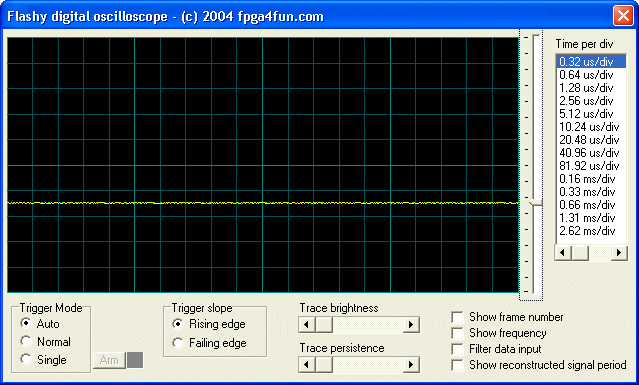
We apply a 1.000MHz test signal and we calibrate the output. Let's get 7 vertical divisions here.
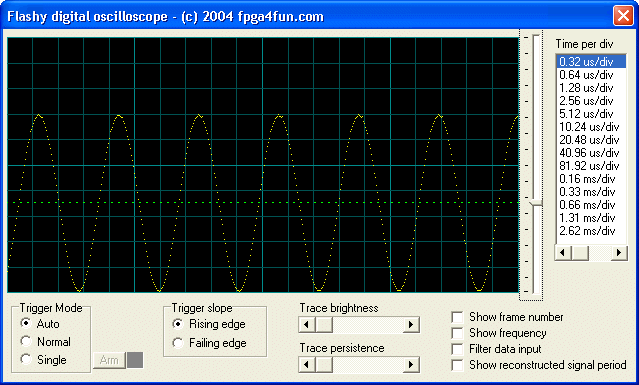
If we apply a 80MHz signal... the trace stays flat (since we are sampling at 80MHz).
But see what happens at 79.000MHz. Looks like a 1MHz signal!
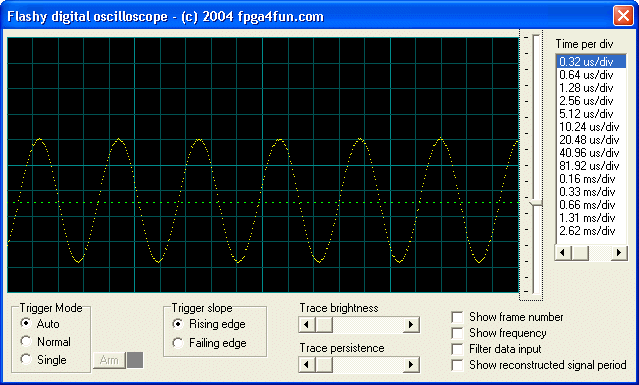
That's a "ghost" signal (80MHz-79MHz=1MHz)
The interesting thing is that, since the signal is periodic, we can actually see how the 79MHz look (even if the period says 1MHz, the shape is the actual 79MHz signal).
81.000MHz looks like 1MHz too...
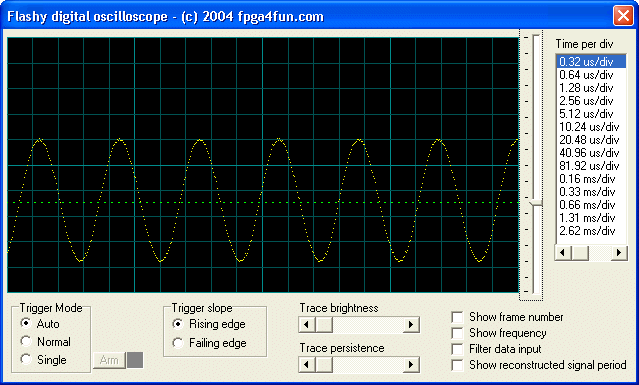
82.000MHz, looks like a 2MHz signal.
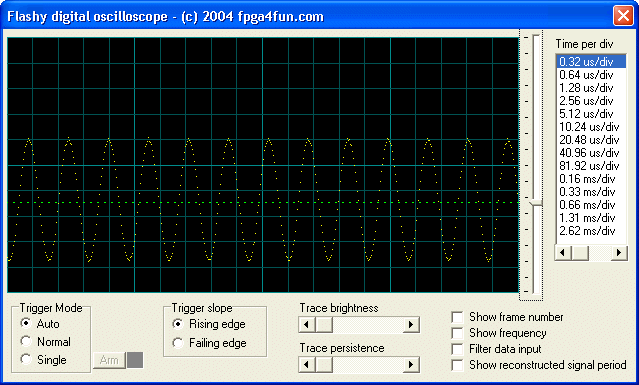
90.200MHz, getting interesting...
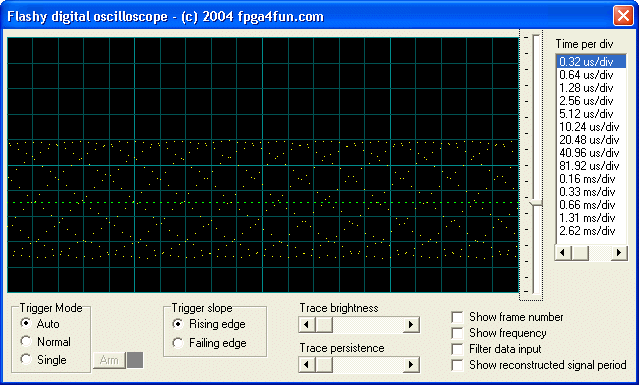
99.800MHz
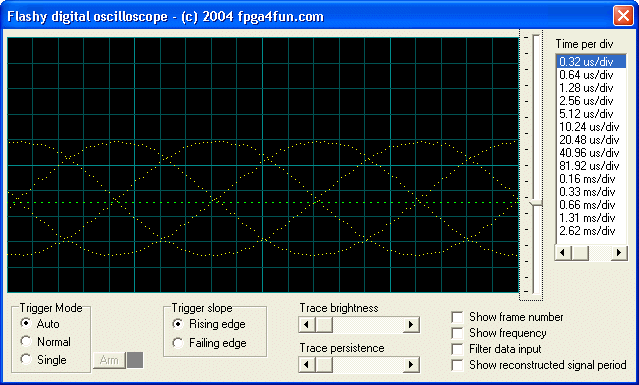
119.000MHz
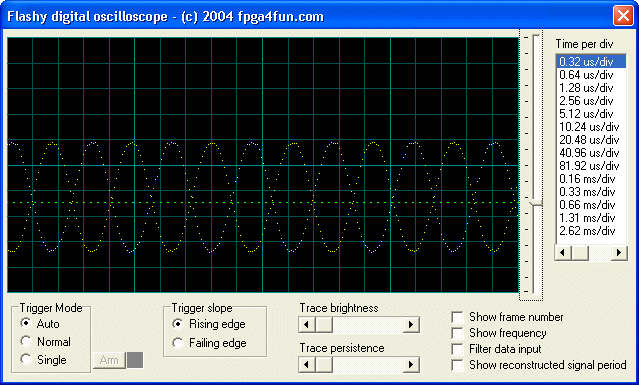
160.50MHz
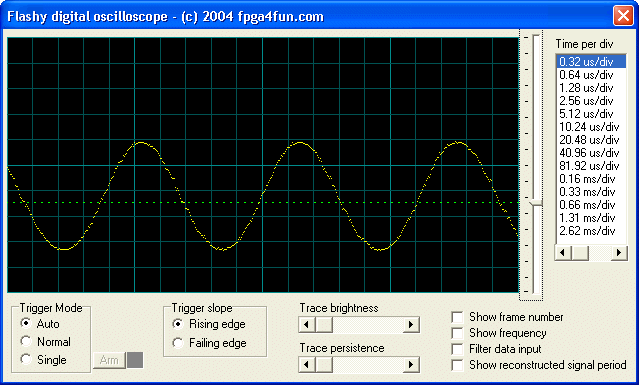
162.50MHz
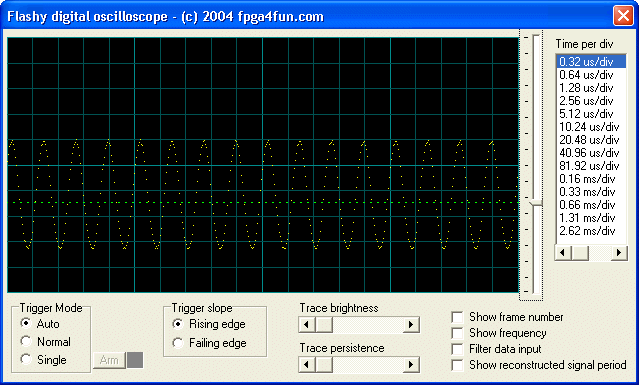
199.50MHz.
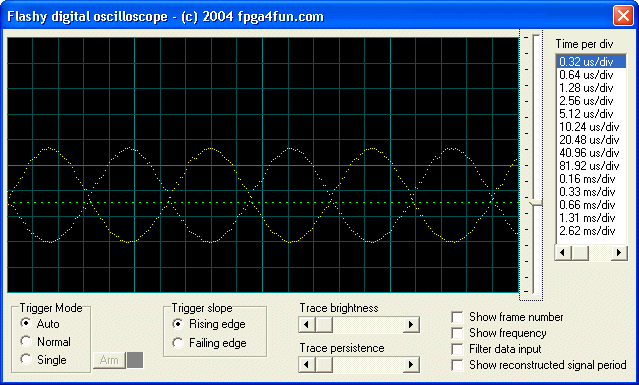
238.50MHz
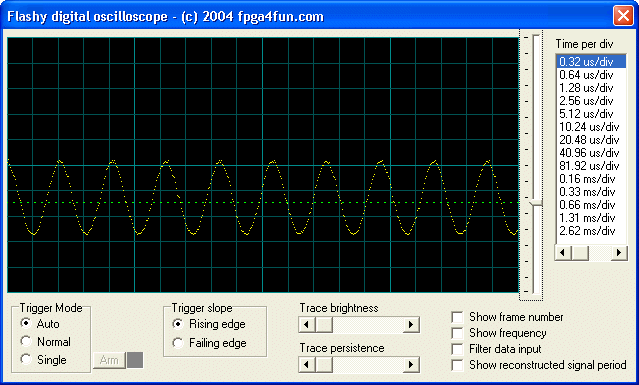
322.00MHz
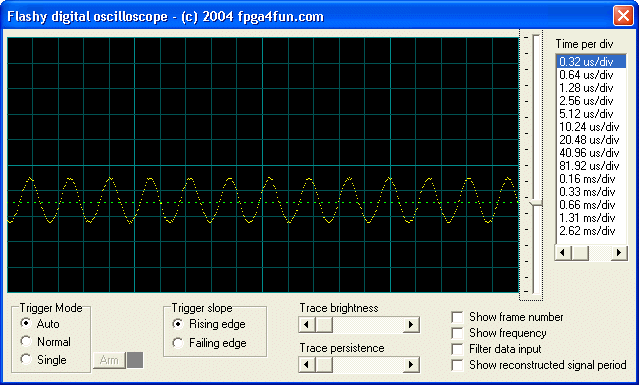
401.00MHz. Looks again like 1MHz, very attenuated though.
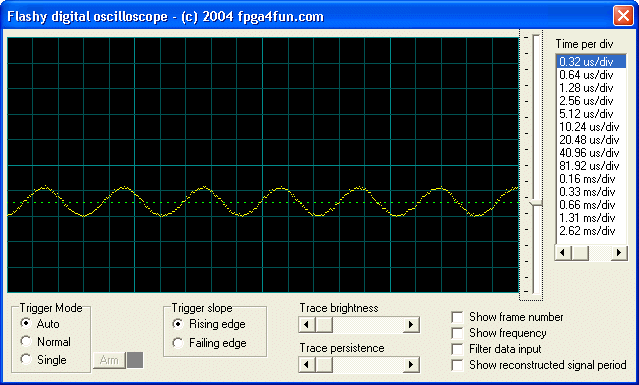
482.00MHz
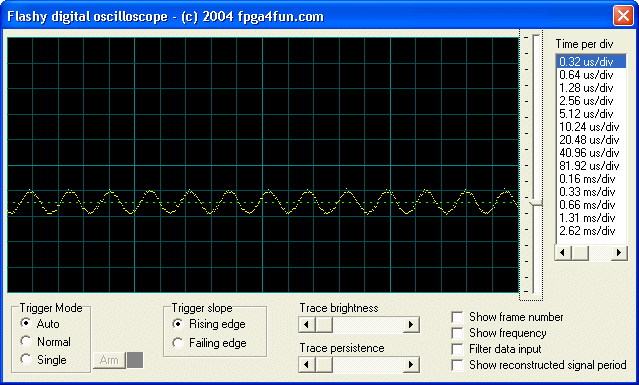
550.00MHz
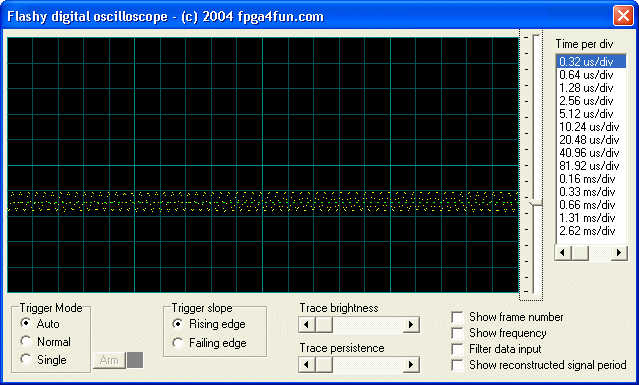
The generator can't go any faster. And we are well above the abilities of Flashy anyway.